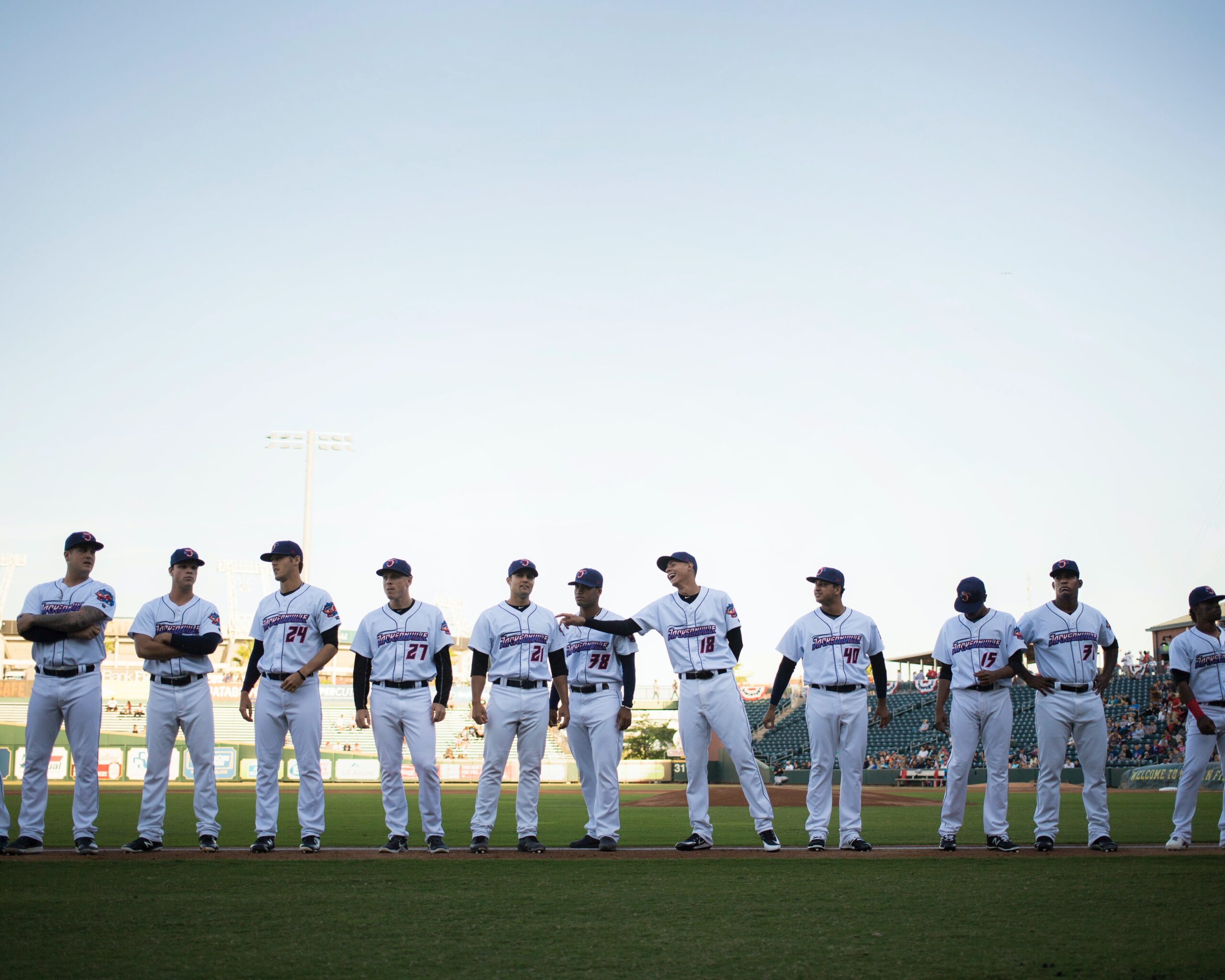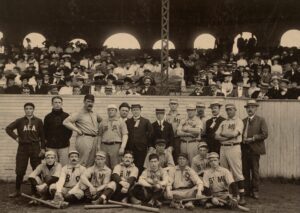Major League Baseball (MLB) is a fascinating sport that showcases incredible skill and athletic prowess. One of the notable aspects of the game is the variety of player heights, which has sparked interest in understanding the average MLB height. As the sport has evolved over the years, the physical traits of players have also changed, leading to shifts in the average height across different positions.
The average height of an MLB player in the 2023 season is approximately 6 feet 1.79 inches (187.44 centimeters). This is significantly taller than the average height of today’s American male, which is around 5 feet 9 inches. Interestingly, the tallest position in baseball is the pitcher, averaging over 6 feet 2.5 inches. It is essential to understand how height factors into the performance of MLB players and how it influences the game as a whole.
Player heights also vary across different positions in the field. For example, pitchers and first basemen tend to be taller, both averaging about 6.2 feet, whereas outfielders, like right fielders, center fielders, and left fielders, average around 6.1 feet (source). This information provides insights into the physicality of MLB players and how it might impact their performance on the field. As the sport continues to evolve, the discussion around the average height and its significance in baseball remains a captivating topic for fans and analysts alike.
Contents
Historical Trends in MLB Heights
Understanding the historical trends in MLB player heights provides insight into how the game of baseball has evolved over the years. This section will discuss the trends in two sub-sections: Early Years and Modern Era.
Early Years
In the early years of Major League Baseball, the average height of players was considerably shorter than what it is today. According to research, the average height of a major league player in the 1870s was 68.9 inches. Over the years, the average height of MLB players has fluctuated, growing by nearly 7% by the turn of the 20th century.
Modern Era
In the modern era, the average height of MLB players has continued to increase. Today, the average player stands at 73.7 inches tall, a notable difference compared to the 1870s. The observed increase in height has affected various aspects of the game, such as performance and position-specific requirements.
For instance, research reveals that taller pitchers have become more prominent in the league, with most of the top-rated pitchers over the past few seasons standing at least 6-foot-3. It is crucial to mention that the overall increase in height among MLB players has been accompanied by an increase in weight and body mass index as well.
Position-Specific Height Averages
The average height of Major League Baseball (MLB) players can vary depending on the specific position they play. Pitchers and fielders tend to have slightly different height averages.
Pitchers
Pitchers in the MLB generally have a taller stature compared to other positions on the field. In the 2023 season, the average height of a pitcher is approximately 6 feet 2 inches, or 74.63 inches to be more precise. Some experts speculate that the greater height may provide an advantage in terms of velocity and the downward trajectory of pitches thrown from a higher release point.
The tallest position in the MLB is indeed the pitcher, with an average height of over 6 feet 2.5 inches.
Fielders
Fielders, also known as position players, have a slightly lower average height compared to pitchers. In the 2023 MLB season, right fielders (RF), center fielders (CF), and left fielders (LF) all have an average height of 6 feet 1 inch.
Similarly, designated hitters (DH) also seem to share an average height of around 6 feet 2 inches.
Here’s a summarized list of position-specific height averages:
- Pitchers (P): 6 feet 2 inches
- Right Fielders (RF): 6 feet 1 inch
- Center Fielders (CF): 6 feet 1 inch
- Left Fielders (LF): 6 feet 1 inch
- Designated Hitters (DH): 6 feet 2 inches
It’s worth noting that the height averages listed above are influenced by various factors, including player performance and the changing trends within the sport.
Comparing MLB Heights to General Population
The average height of Major League Baseball (MLB) players has experienced a notable increase over the years. In the 2023 season, the average height of an MLB player is 6 feet 1.79 inches (187.44 centimeters). When comparing these professional athletes to the general population, several distinctions can be observed.
The average MLB player’s height is greater than that of the average American male, who stands at around 5 feet 9.3 inches (176 centimeters). This difference in stature is particularly evident when looking at the specific positions within the sport. For instance, pitchers and first basemen have an average height of 6.2 feet, while designated hitters also measure an average 6.2 feet in height. Right fielders, center fielders, and left fielders all have an average height of 6.1 feet.
Comparing MLB players to athletes in other professional sports reveals further disparities. The average height of an MLB player is a third of an inch shorter than the average NFL player and 4.71 inches smaller than the typical NBA player. Despite these differences, it is essential to note that physical attributes alone do not determine success in any athletic endeavor, as factors such as skill, experience, and determination also play crucial roles.
Impact of Height on Performance
In the world of Major League Baseball (MLB), players’ heights can vary significantly, with each height presenting unique advantages and disadvantages when it comes to performance.
Advantages
Taller pitchers, generally measuring up to an average height of 6’2.5″ may benefit from their height in certain aspects. For example, they tend to release the ball closer to home plate, which can create a more deceptive visual perception for the batter. Additionally, their height can generate a higher release point, allowing for more downward plane on their pitches, making them harder to hit.
When it comes to position players, taller athletes may have a longer reach, which can be advantageous both offensively and defensively. In the case of first basemen, for instance, an average height of 6’2″ allows them to stretch out more effectively and increase their chances of catching errant throws. For outfielders and infielders, a greater height (around 6’1″ for CF, LF, and 3B) can contribute to a better range in fielding and a larger strike zone when batting.
Disadvantages
Despite the benefits that height can provide, there are some drawbacks. Taller pitchers may experience difficulties with their mechanics and maintaining a consistent arm slot, which can translate to issues with command and control. Additionally, an increased risk of injuries may be tied to a pitcher’s height due to the added stress on the body.
For position players, their larger strike zone can make them more susceptible to swinging at pitches outside the strike zone, leading to a higher strikeout rate. Defensively, taller players may have a more challenging time making quick lateral movements, possibly impacting their overall range in the field.
Famous MLB Players Outside Average Height Range
While the average height of MLB players is 6 feet 1.79 inches (187.44 centimeters), some famous players have been well below or above this average, and still managed to excel in their careers. Let’s take a look at a few exceptional players who stood out due to their unique stature.
ICYMI: Aaron Judge and José Altuve are not the same height. 😉 #ALCS pic.twitter.com/nD8ADT2Tvb
— MLB (@MLB) October 18, 2019
Shorter MLB Players:
- Jose Altuve – Standing at 5 feet 6 inches (167.64 centimeters), Altuve is a 7-time All-Star, 3-time American League batting champion, and the 2017 American League MVP.
- Dustin Pedroia – At 5 feet 9 inches (175.26 centimeters), Pedroia had a successful career with the Boston Red Sox, earning 4 All-Star selections, 4 Gold Glove Awards, an MVP, and 2 World Series championships.
Taller MLB Players:
- Aaron Judge – Measuring 6 feet 7 inches (200.66 centimeters) and 282 pounds, the New York Yankees outfielder is a powerhouse with a Rookie of the Year award and multiple All-Star selections.
- Randy Johnson – The towering left-handed pitcher stood at 6 feet 10 inches (208.28 centimeters) and is in the Baseball Hall of Fame, having won 5 Cy Young Awards, a World Series championship, and recording over 300 wins and 4,800 strikeouts during his career.
As these examples show, height alone is not the determining factor of success in Major League Baseball. Players with exceptional skills and dedication can thrive at the highest level, regardless of their height.
Conclusion
In summary, the average height of Major League Baseball (MLB) players has changed over time. The data indicates that the average height in 2021 was around 73 inches, and it has fluctuated slightly in recent years, with some positions having taller or shorter players on average.
For instance, Pitchers and Designated Hitters tend to have an average height of 6’2″, while outfield positions like Right Fielders, Center Fielders, and Left Fielders have an average height of 6’1″. It is crucial to remember that these are just averages and individual players’ sizes may vary significantly.
Players’ height can influence their performance on the field, with taller players often having an advantage in positions that require longer reach or more powerful swings. However, shorter players can be just as successful, demonstrating agility, speed, and coordination. Ultimately, the physical attributes of MLB players contribute to their skills and abilities, but it is essential to consider other factors, such as training, experience, and mental fortitude, when evaluating their overall performance.



